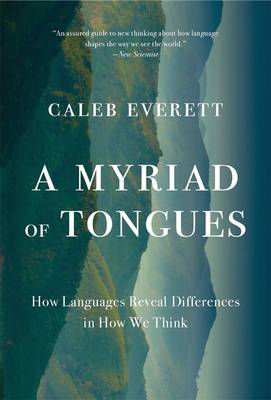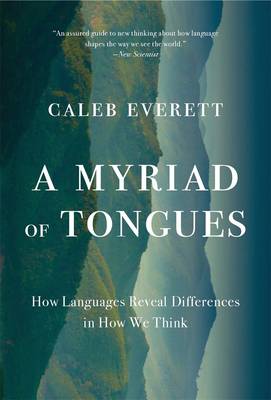
- Afhalen na 1 uur in een winkel met voorraad
- Gratis thuislevering in België vanaf € 30
- Ruim aanbod met 7 miljoen producten
- Afhalen na 1 uur in een winkel met voorraad
- Gratis thuislevering in België vanaf € 30
- Ruim aanbod met 7 miljoen producten
Zoeken
A Myriad of Tongues
How Languages Reveal Differences in How We Think
Caleb Everett
Paperback | Engels
€ 30,95
+ 61 punten
Uitvoering
Omschrijving
An award-winning look at the relationship between the language we speak and our perception of such fundamentals of experience as time, space, color, and smells.
We tend to assume that all languages categorize ideas and objects similarly, reflecting our common human experience. But in fact many basic concepts are not universal. Speakers of different languages literally see and think about the world differently. Caleb Everett takes readers around the globe, explaining what linguistic diversity shows us about human culture. For instance, though we may think that everybody refers to time in spatial terms--in English, it "passes us by"--speakers of the Amazonian language Tupi Kawahib never do. In fact, Tupi Kawahib has no word for "time" at all. And while it has long been understood that languages categorize colors that speakers regularly encounter, evidence also suggests that the color words at our disposal affect how we actually perceive colors. Similarly, the terms available to us affect the range of smells we can identify. Why do some cultures talk anthropocentrically about things being to one's "left" or "right," while others use geocentric words like "east" and "west"? What is the connection between what we eat and the sounds we make? A Myriad of Tongues answers these and other questions, yielding profound insights into fundamentals of human communication and experience.Specificaties
Betrokkenen
- Auteur(s):
- Uitgeverij:
Inhoud
- Aantal bladzijden:
- 288
- Taal:
- Engels
Eigenschappen
- Productcode (EAN):
- 9780674303461
- Verschijningsdatum:
- 7/04/2026
- Uitvoering:
- Paperback
- Formaat:
- Trade paperback (VS)
- Afmetingen:
- 140 mm x 210 mm
- Gewicht:
- 330 g

Alleen bij Standaard Boekhandel
+ 61 punten op je klantenkaart van Standaard Boekhandel
Beoordelingen
We publiceren alleen reviews die voldoen aan de voorwaarden voor reviews. Bekijk onze voorwaarden voor reviews.








